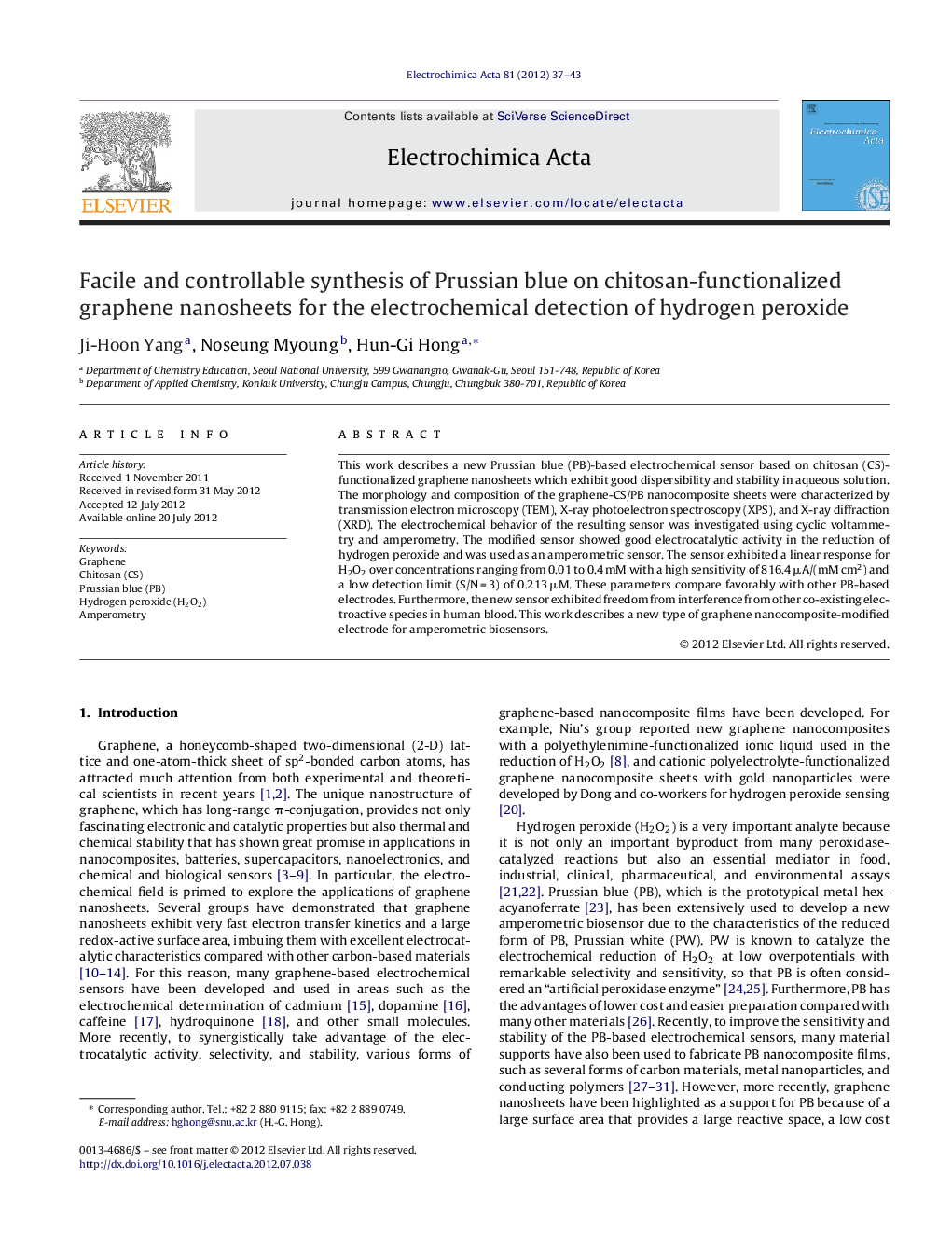| Article ID | Journal | Published Year | Pages | File Type |
|---|---|---|---|---|
| 188132 | Electrochimica Acta | 2012 | 7 Pages |
This work describes a new Prussian blue (PB)-based electrochemical sensor based on chitosan (CS)-functionalized graphene nanosheets which exhibit good dispersibility and stability in aqueous solution. The morphology and composition of the graphene-CS/PB nanocomposite sheets were characterized by transmission electron microscopy (TEM), X-ray photoelectron spectroscopy (XPS), and X-ray diffraction (XRD). The electrochemical behavior of the resulting sensor was investigated using cyclic voltammetry and amperometry. The modified sensor showed good electrocatalytic activity in the reduction of hydrogen peroxide and was used as an amperometric sensor. The sensor exhibited a linear response for H2O2 over concentrations ranging from 0.01 to 0.4 mM with a high sensitivity of 816.4 μA/(mM cm2) and a low detection limit (S/N = 3) of 0.213 μM. These parameters compare favorably with other PB-based electrodes. Furthermore, the new sensor exhibited freedom from interference from other co-existing electroactive species in human blood. This work describes a new type of graphene nanocomposite-modified electrode for amperometric biosensors.
Graphical abstractFigure optionsDownload full-size imageDownload as PowerPoint slideHighlights► Fabrication of Prussian blue (PB) on chitosan (CS)-functionalized graphene (rGO) nanosheets. ► The rGO-CS/PB nanocomposite is characterized by CV, amperometry, TEM, XPS and XRD. ► Highly selective electrocatalytic reduction of H2O2 on rGO-CS/PB nanocomposite electrode. ► Electrocatalytic activity of PB nanoparticles depend on the particle size.
